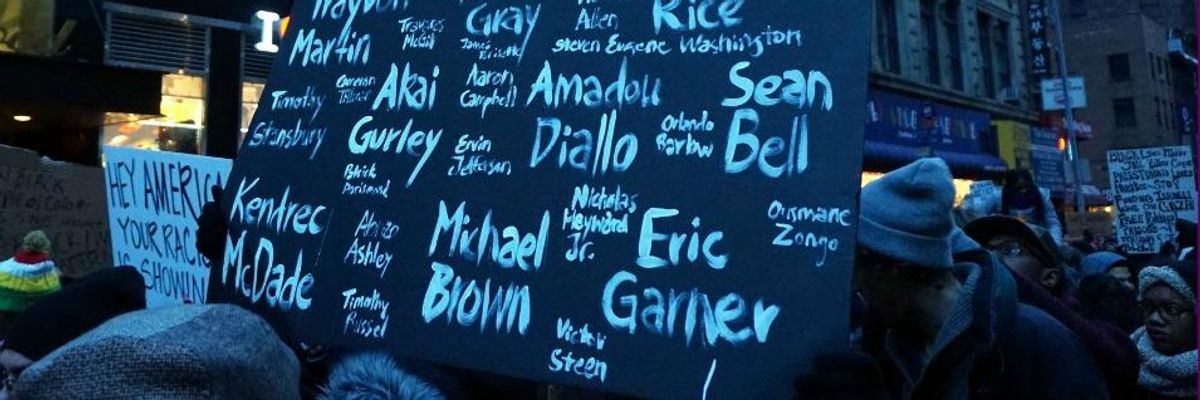We at National People's Action offer our deepest sympathy to the families of officers Wenjian Liu and Rafael Ramos who were shot to death Saturday in Brooklyn, NY. This senseless act of violence is a tragedy. Our hearts go out to the families, friends, and communities grieving the loss of both men.
Since the press announced that Saturday's shooter may have committed the crime in retaliation for the killings of Eric Garner and Michael Brown by police officers in Staten Island, NY and Ferguson, MO, people on all sides of the issue have drawn comparisons between the three incidents. While no family should have to mourn the loss of a loved one to senseless gun violence, it is vital to recognize the difference between these killings.
The aberrant actions of one individual cannot reasonably be equated with the common practice of police departments across the country. There is no question that the senseless killing of officers Wenjian and Liu falls squarely outside of the lines of acceptable behavior in our society. What remains in question is whether the killing of unarmed Black men by police will continue to be a regular occurrence, supported by the justice system or if we will make the taking of the lives Black people by police equally unacceptable.
There are crucial differences between state sanctioned police violence, enforced by institutions and the actions of individuals. A critical distinction is that fatal police shootings are unusual. Police officers are rarely shot to death while on duty. According to the LA Times, the last New York City policeman to be shot to death while on duty was Peter J. Figoski in December 2011. A single Internet query tells us that, according to the Officer Down Memorial Page, 113 police officers died while on duty in 2014, 46 due to gunfire. Gun violence in the US kills roughly twice the number of Black people than white, though we do not know the exact number of unarmed Black men who were killed by police officers this year because that data is not tracked. Nor is there a website to honor all of the Black men and boys who have died while going about their daily lives.
Another key difference is that killing police officers is clearly unacceptable. Police deaths always trigger immediate response from government and the public. In this case, officials on all sides of the issue released statements in response to the killing of the officers calling for immediate action; some directly placing the blame on demonstrations against racially targeted police violence. Several officials claimed that police have become "targets of violence" and all demand action to immediately ensure police safety. In contrast, the killing of unarmed Black men by police has gone largely unnoticed by the broader public. Only now, with protesters in as many as 200 cities around the world holding sustained demonstrations and protests, is this issue getting the public attention it deserves.
Comparing the killing of the two officers with those of Michael Brown and Eric Garner is dangerous and misleading. It asks all of us to pretend that power has nothing to do with the equation and to assume one man, apparently dealing with mental illness of some kind, operating alone and without the sanction or support of any organized group, be put in the same category as the combined armed, organized, force of police departments through out the United States. It is our hope that Mayor de Blasio will rescind his call to suspend protests in New York and that the NYPD will ignore reactionary calls for escalation. Irresponsible, uninformed accusations blaming protesters for the officers' deaths serve only to ratchet up tensions and do not increase public safety. What is needed, in fact, is continued support for on-going, non-violent protests and demonstrations calling for reforms that end racially biased police practices and increase public safety.
